Stabilization of pigments in ink
![Stabilization of the ink [Translate to Englisch:] Pigmente in Tinte stabilisieren](https://www.octopus-office.de/info/fileadmin/_migrated/pics/pigmente_stabilisieren-tinte.jpg)
Since pigments are, by definition, insoluble in water, it is not individual molecules that are surrounded by water particles, but larger aggregates. The finer the pigments are ground, the smaller they are. Nevertheless, even the finest pigment particles sink to the bottom if you wait long enough. The water molecules have no way of "holding" the pigments, since they are chemically too different (water polar, pigment non-polar).
Wetting agents (surfactants) now have the property of combining polar and non-polar groups in one molecule. The head group is usually polar, and the tail group non-polar. If such a surfactant is dissolved in water, so-called mycells are formed. These are spherical structures in which the tails point inward and the heads outward. This allows the water to dock onto the heads. The non-polar "interior" then holds non-polar substances that are otherwise not soluble in water, e.g. our pigment particles. Through clever choice of surfactants, it is possible to keep the pigments in suspension for quite a long time. However, such an ink is sensitive to low temperatures, for example, because the mycells are destroyed in the cold.
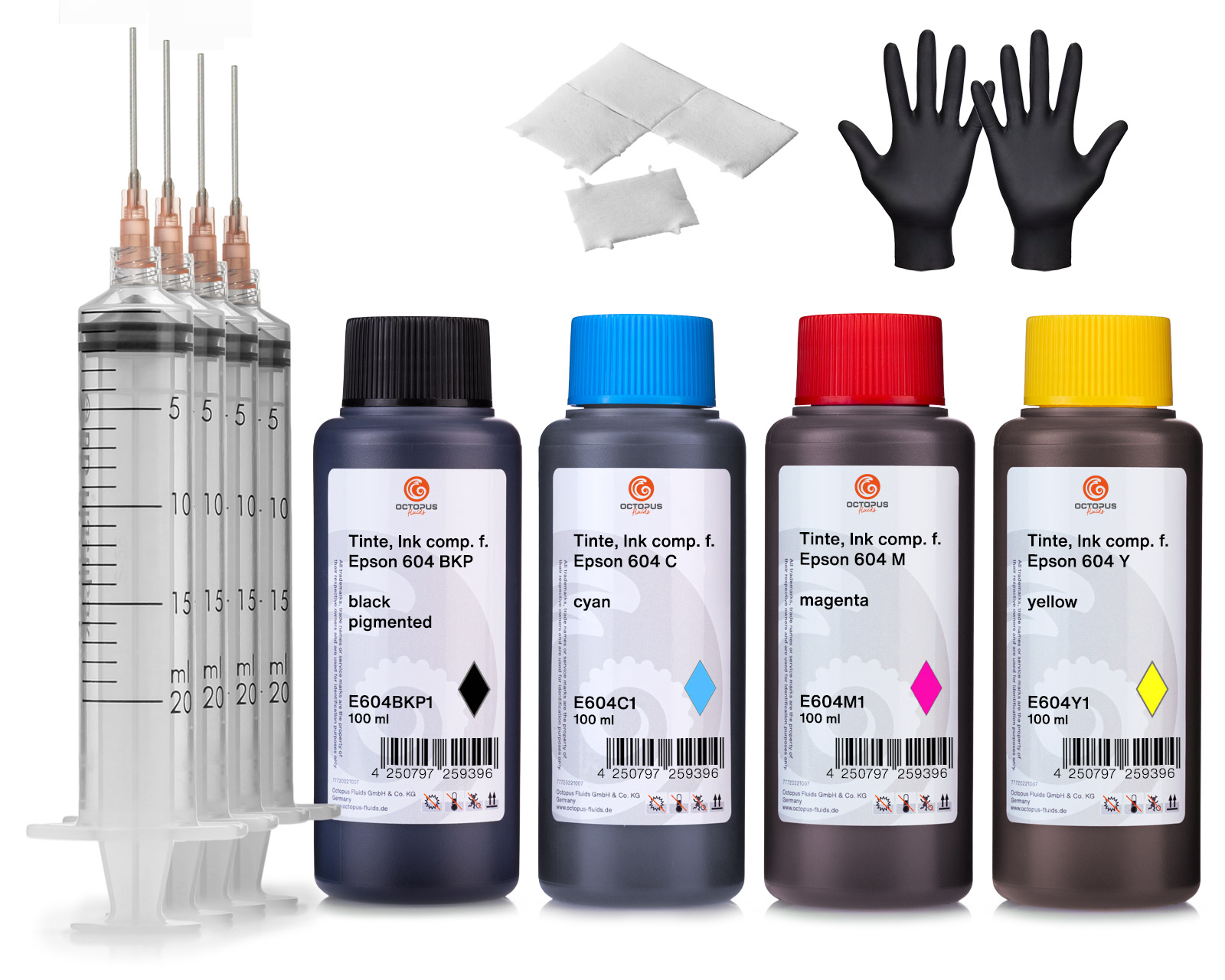 Octopus printer ink set compatible for Epson 604 ink cartridges, WorkForce 2950DWF 2930DWF
Octopus printer ink set compatible for Epson 604 ink cartridges, WorkForce 2950DWF 2930DWF
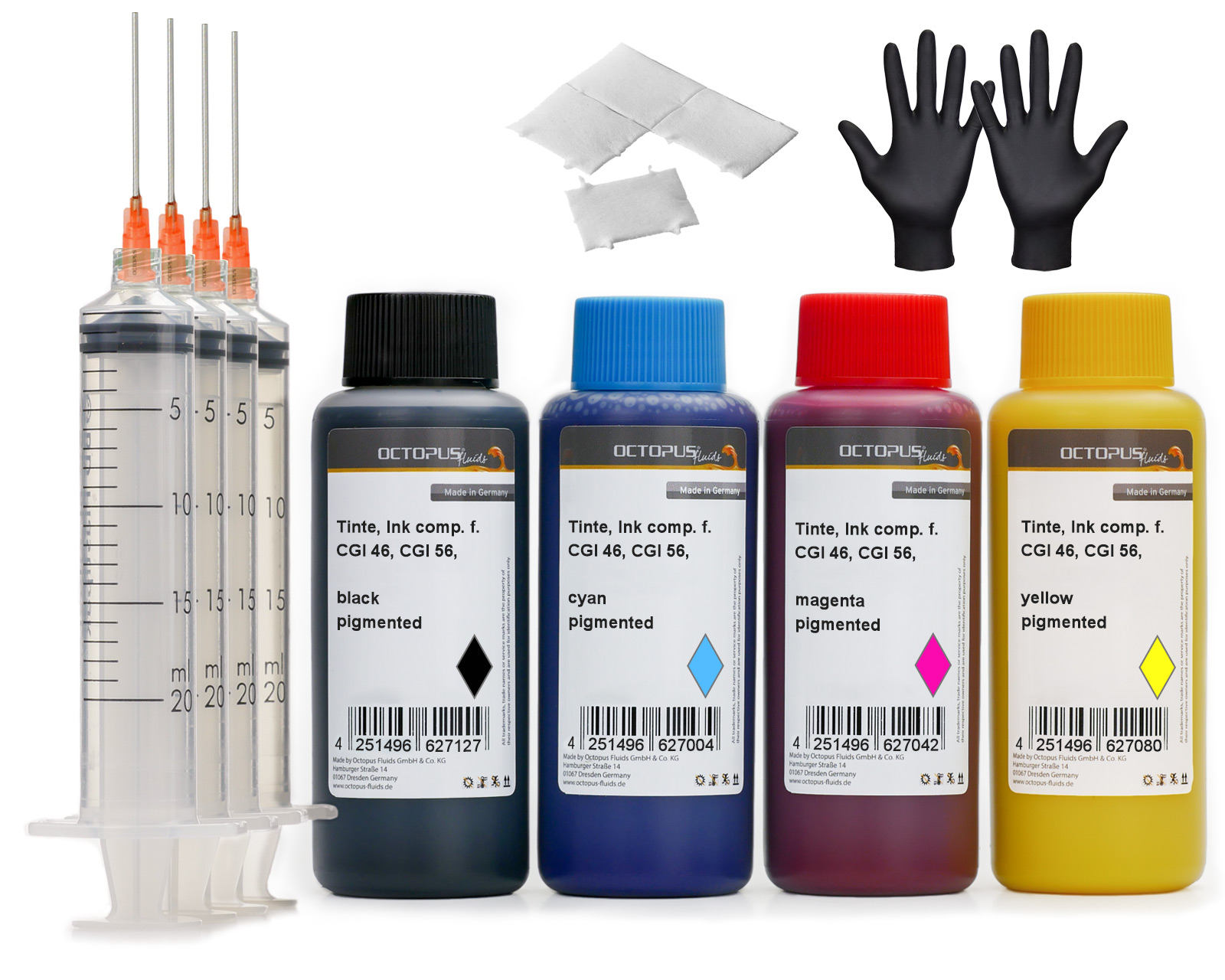 Printer Ink Set for Canon GI 46, GI 56 ink tank
Printer Ink Set for Canon GI 46, GI 56 ink tank
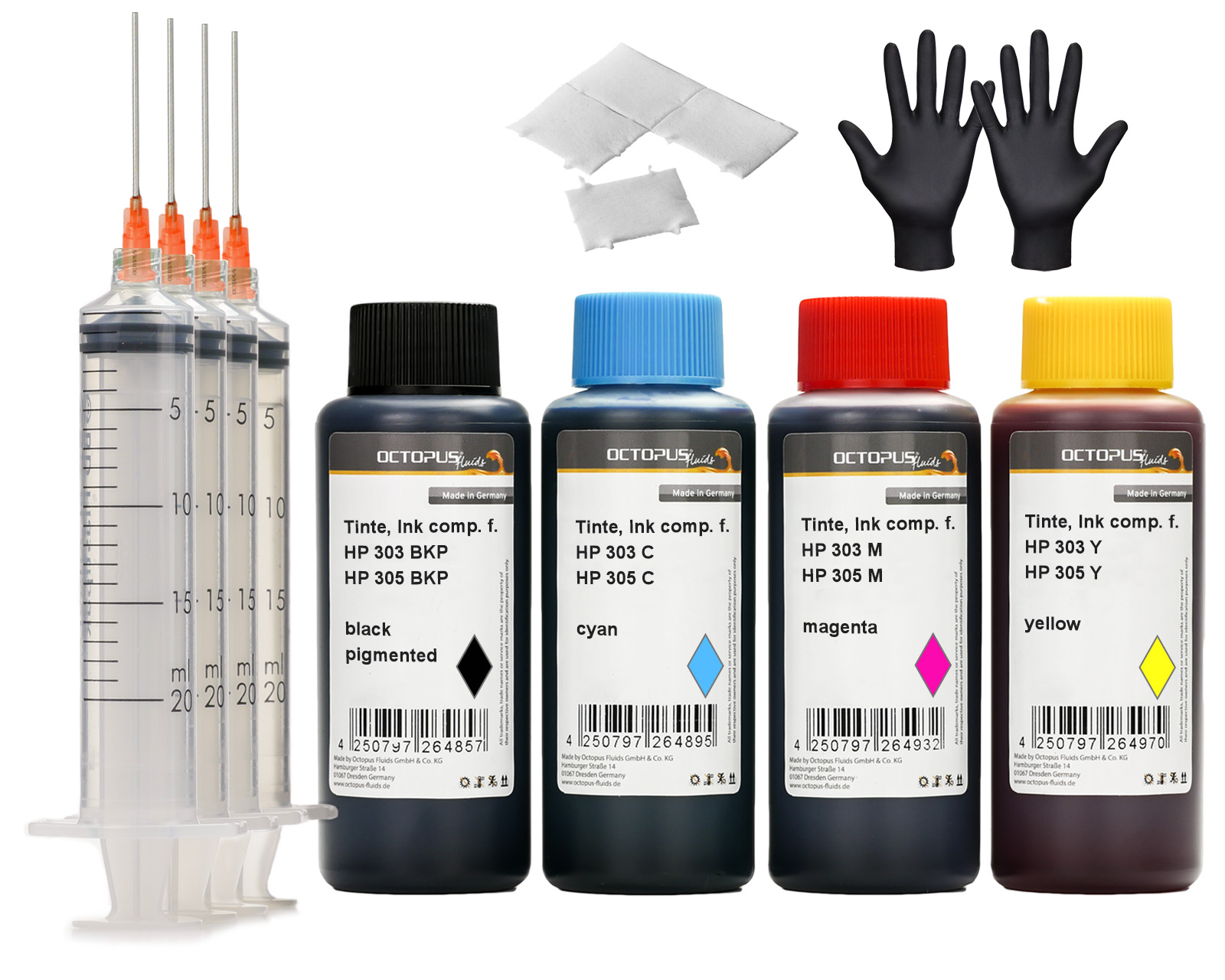 Refill ink set compatible for HP 303 and HP 305 Ink Cartridges, DeskJet, DeskJet Plus, Envy, Envy Pro
Refill ink set compatible for HP 303 and HP 305 Ink Cartridges, DeskJet, DeskJet Plus, Envy, Envy Pro
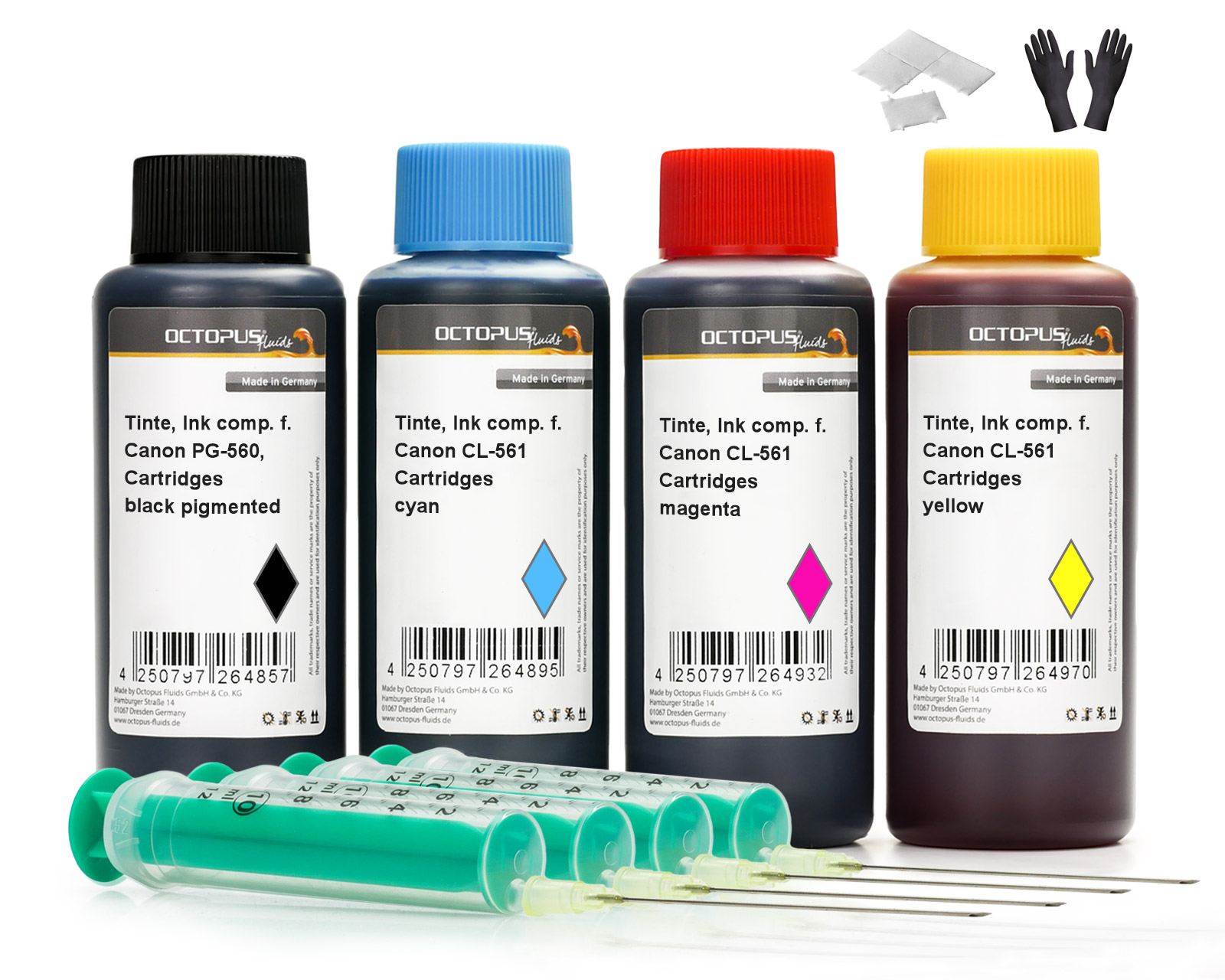 Octopus printer ink set compatible for Canon PG-560, CL-561 ink cartridges, Canon Pixma TS 5300, 7400
Octopus printer ink set compatible for Canon PG-560, CL-561 ink cartridges, Canon Pixma TS 5300, 7400
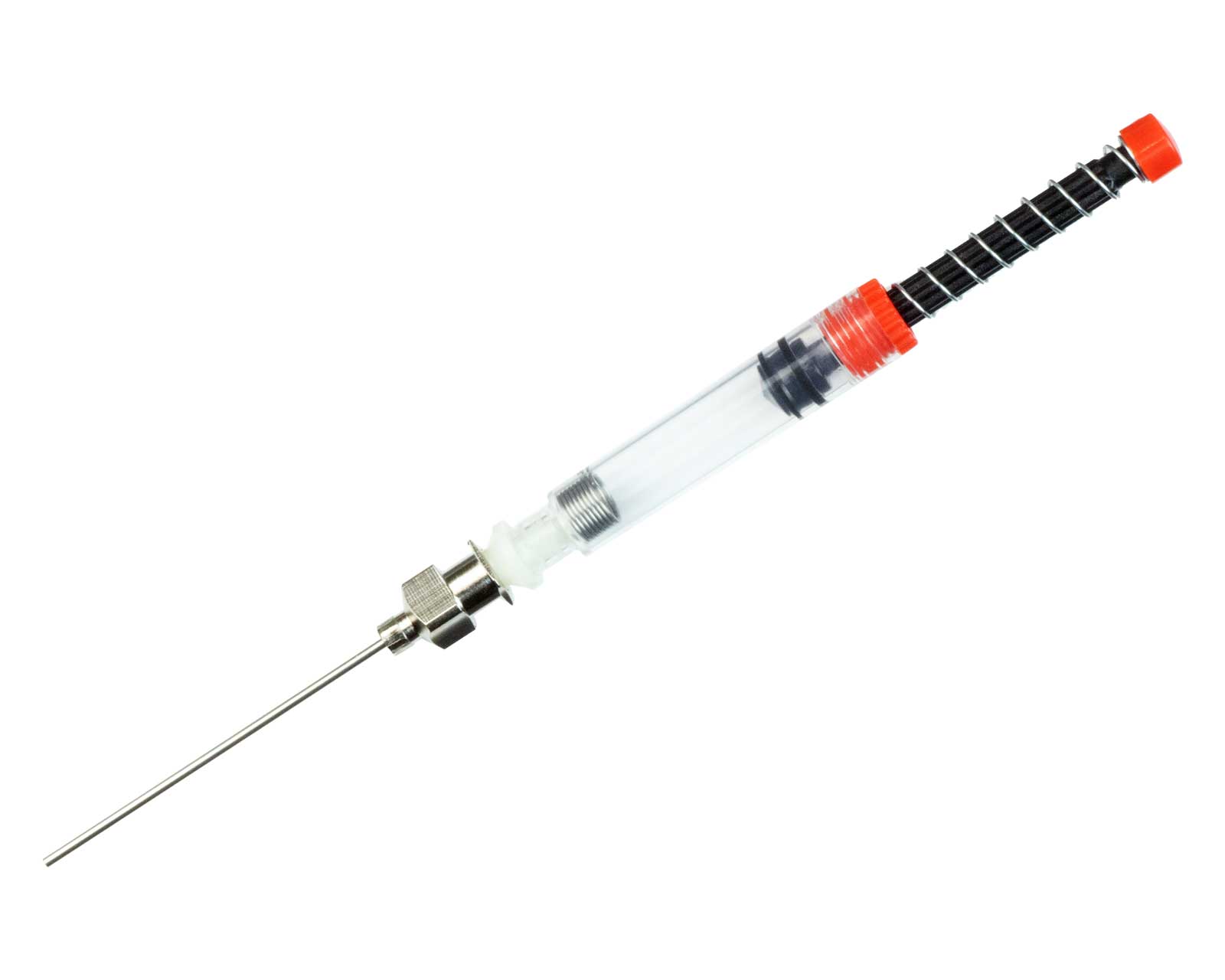 OCTOPUS ink absorber for refilling ink converter and fountain pen cartridge
OCTOPUS ink absorber for refilling ink converter and fountain pen cartridge
 Octopus sales display for presentation of 120 Alcohol Inks or 48 fountain pen inks
Octopus sales display for presentation of 120 Alcohol Inks or 48 fountain pen inks
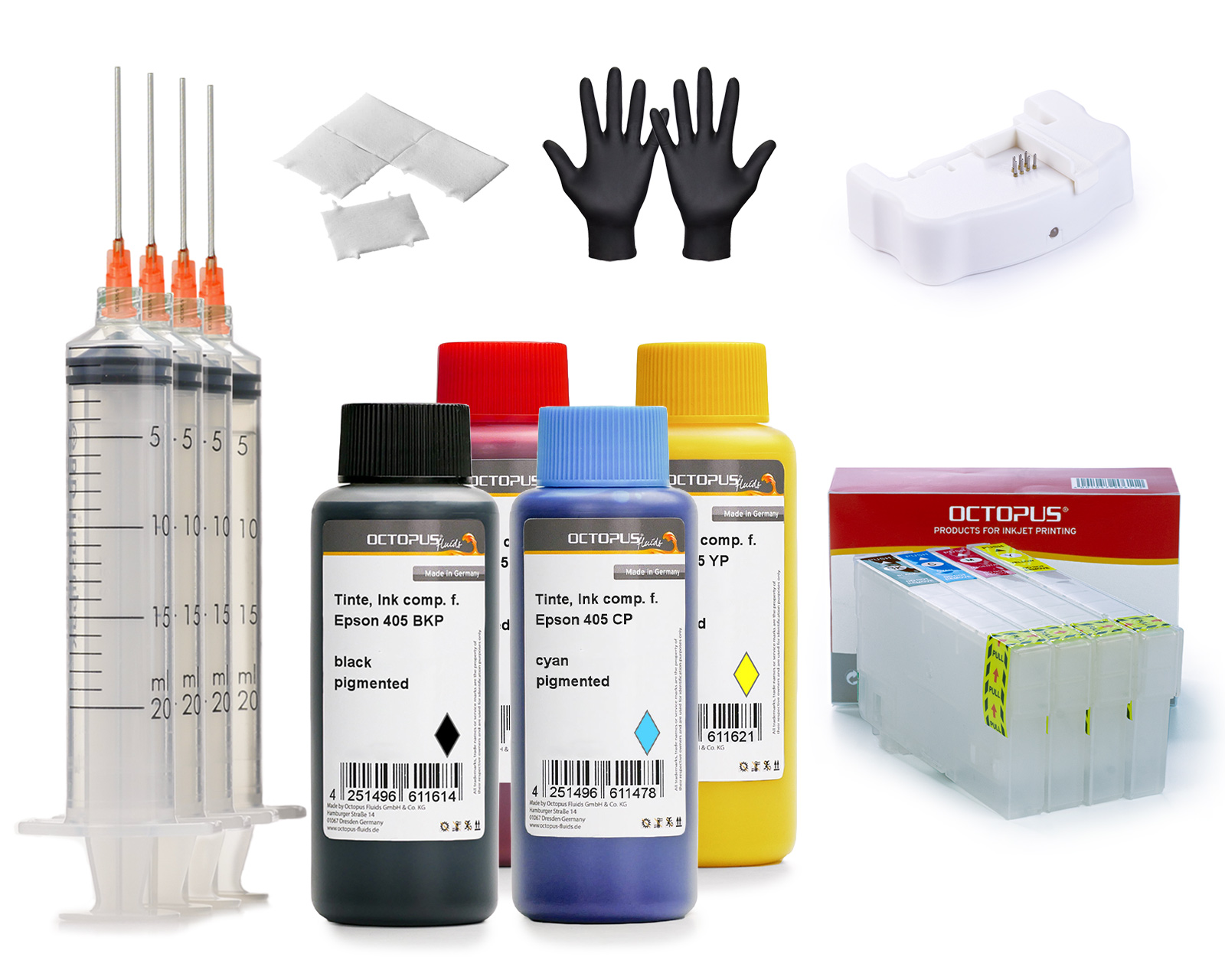 Fill In, QuickFill printer cartridges for Epson 405 with chip resetter and printer ink
Fill In, QuickFill printer cartridges for Epson 405 with chip resetter and printer ink
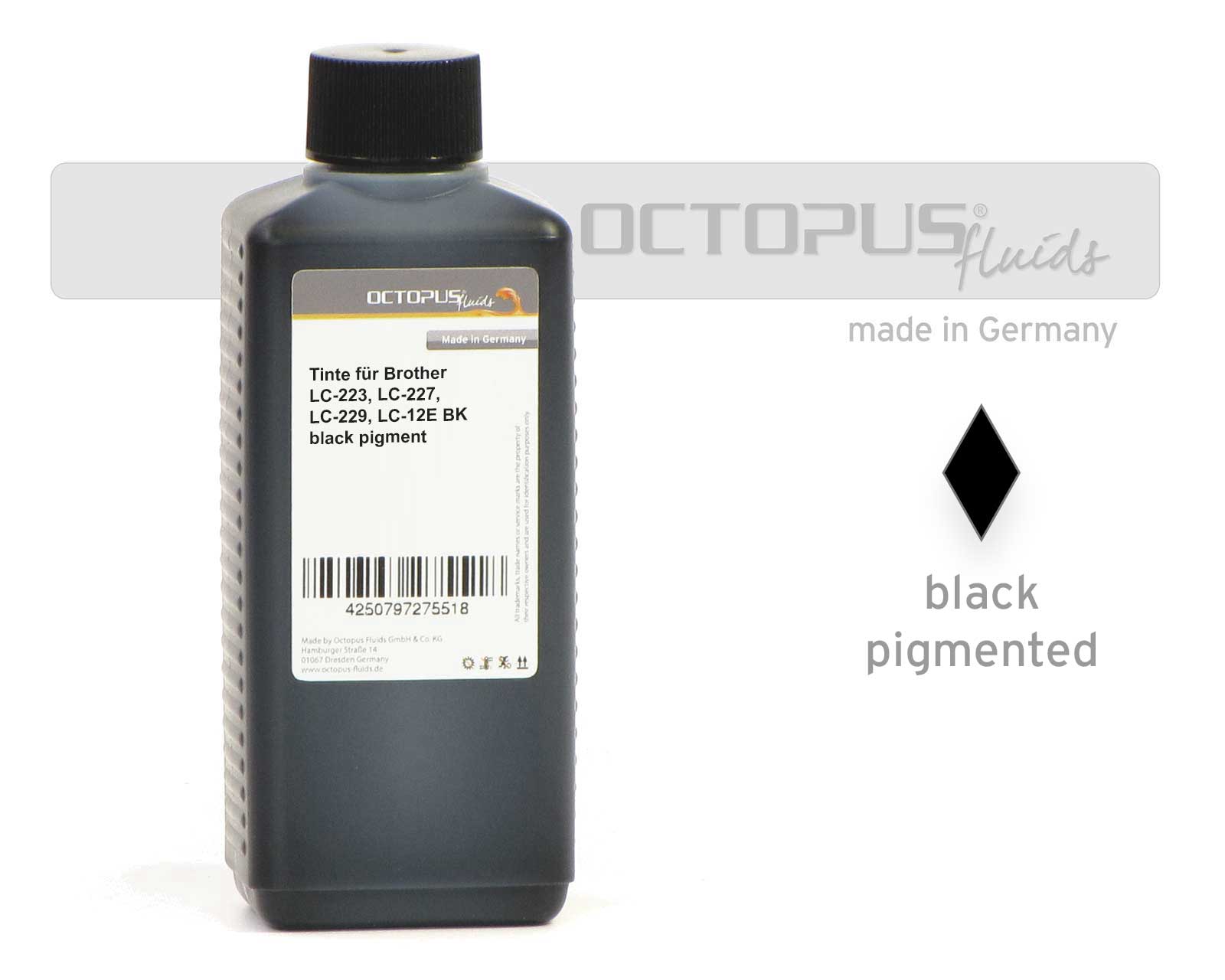 Refill ink comp. with Brother LC-223, LC-227, LC-229, LC-12E black pigmented
Refill ink comp. with Brother LC-223, LC-227, LC-229, LC-12E black pigmented
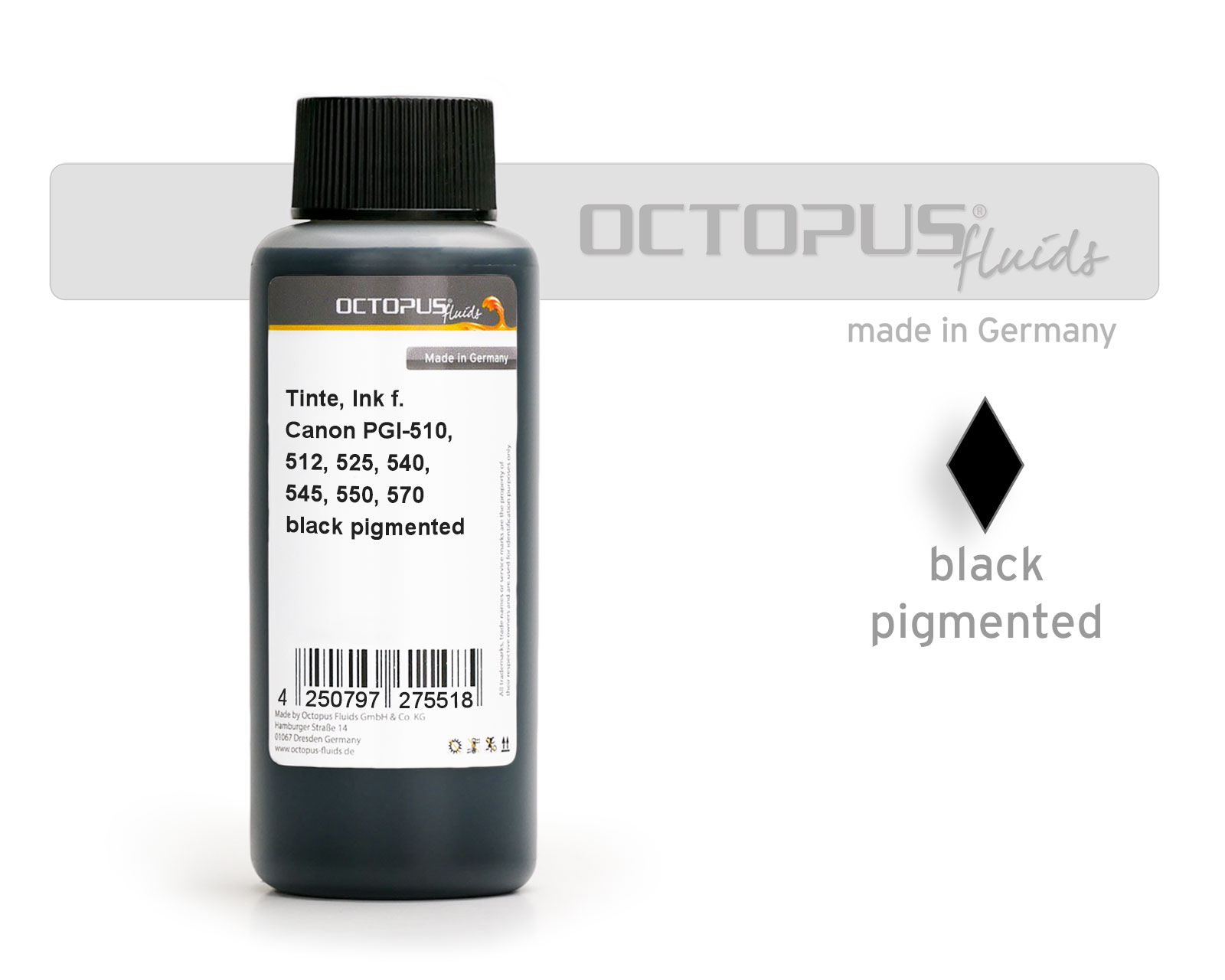 Ink for Canon PGI-525, 550, 555, 570, PG-540, 545, 510, 512 pigm. black
Ink for Canon PGI-525, 550, 555, 570, PG-540, 545, 510, 512 pigm. black
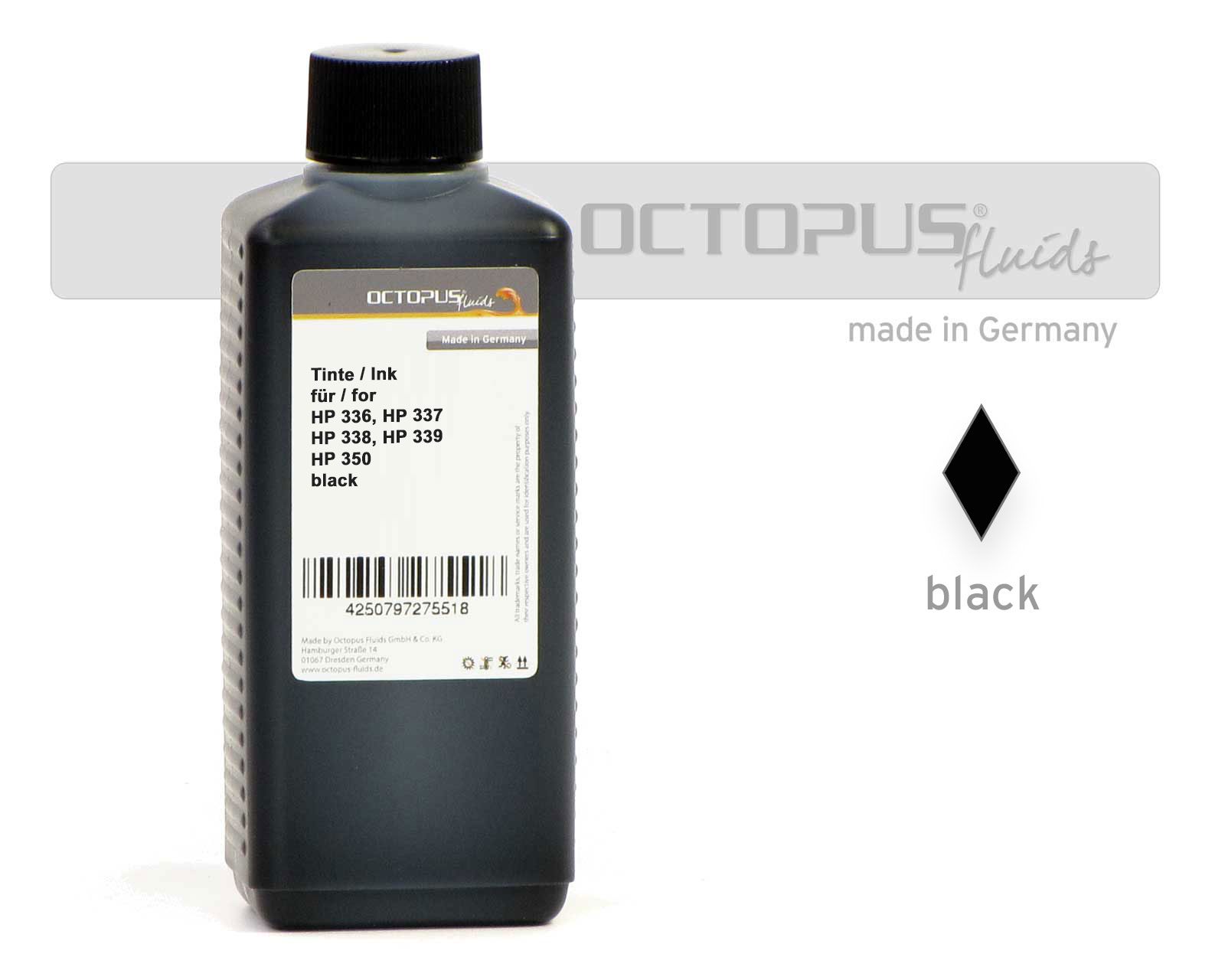 Refill ink compatible for HP 336, 337, 338, 339, 350, 350 XL pigmented black
Refill ink compatible for HP 336, 337, 338, 339, 350, 350 XL pigmented black







